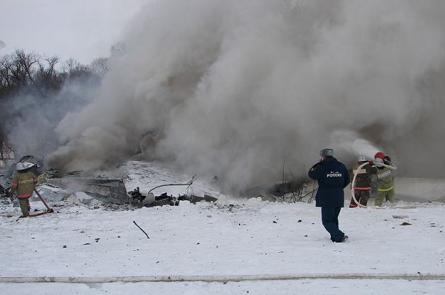Russian investigators have concluded that the Antonov An-148 that crashed while on a test flight in early March was travelling at 60kt more than its never-exceed speed when it broke up.
The industry and trade ministry has released part of the final report from the investigation committee, following the 5 March accident, which said that the crew inadvertently allowed the twinjet to accelerate beyond design speed while demonstrating an emergency descent manoeuvre.
It said that the aircraft was 59kt (110km/h) over this limit at the time. This led to structural deformation and the "emergence of low-frequency vibrations in all axes".
 |
|---|
The Antonov An-148 that crashed while on a test flight in early March was travelling at 60kt more than its never-exceed speed when it broke up |
The ministry said: "The result was the destruction of [the]aircraft in the air, followed by its collision with the ground."
Acknowledging that the speed indication on the aircraft's cockpit display was incorrect, at flight regimes outside of normal operation, the ministry nevertheless said the crew demonstrated lack of co-ordination and "untimely and inadequate actions".
None of the six occupants survived the accident, south of airframer VASO's plant in Voronezh.
Sources within the investigating committee told Flight International that the incorrect speed indications had been detected by the An-148's built-in health-monitoring system during previous flights but, for undetermined reasons, had not attracted attention.
Language problems on board the aircraft, which was being demonstrated to Myanmar air force representatives, also exacerbated the situation.
Antonov has introduced changes to software dealing with flight-parameter indications, but no mandatory modifications to the twinjet have been prescribed.
Source: Flight International























